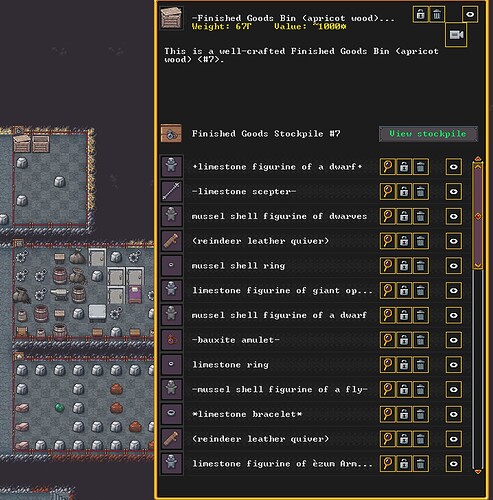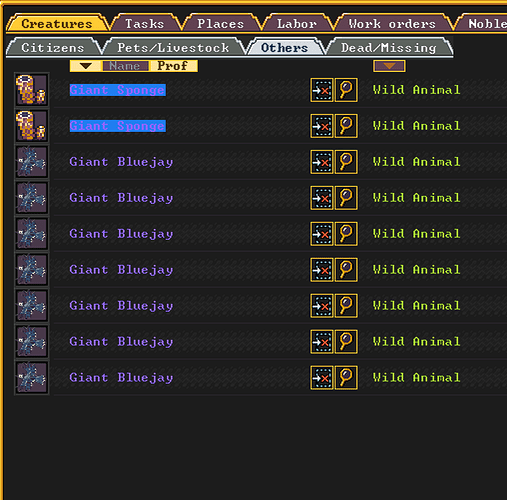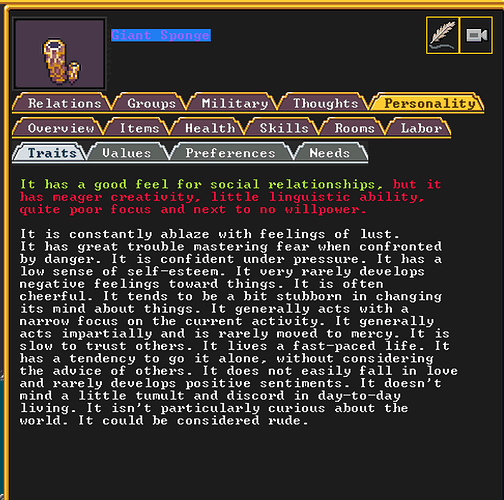2nd Galena, 100. Late Summer.
The expansion of our hold has significantly slowed, as we begin the transition from building our rooms to occupying them. We had drafted our stonecrafter, Ustuth, as a second miner, and he and Vabok were mining full time (disabled from other work), but now we have fallen behind in hauling, and are nearly done with our initial rooms.
We’ve expanded the stockpiles:
This is mostly for the purpose of finally emptying our broken wagon, which we have just ordered to be dismantled. Listenwound is our home now, for better or worse.
As you can see, we are already using lots of wooden bins–Nish, the carpenter has been hard at work. Not pictured: the chairs, chests, and beds he carved for our dining hall and hospital.
The forest continues to provide its bounty, as we feast on bayberry and pecan stew, and drink bayberry wine. Fortunately, Stukos has been diligent about pulling mussel and the occasional fish from our river, so we have some variety. We have not yet begun farming true dwarven fare.
We are also awash in mussel shells. With a recurring order to make them into trinkets, we are slowly accumulating something that someone might someday be interested in trading for.
We have also begun crafting stone, in case shell crafts are not of interest.
By far the most exciting event in the past months is the arrival of our first immigrants: twelve of them! This more than doubles the size of our settlement, and we had to rapidly expand our dormitory. Fortunately, the forest and river still provide plenty of food. [Ed. note: this is too many! I prefer a slower build-up.]
Notable immigrants include Catten Temptpick, legendary metal crafter; Stukos Sabreclutch, legendary weaponsmith; and Adil Archriddled, legendary bone carver. We make a note to increase the priority of our metal industry–well-forged metal crafts and weapons will fetch a hefty price. We also have no bones for our bone carver, so we designate Eral Lushspear, another newcomer and competent marksdwarf, as a hunter. (We then also establish a bowyer, make a crossbow, and some bolts.) This also prompts the creation of a bone carving work detail, to ensure that any bones we do stumble across are crafted by Adil only.
It so happens, however, that the occasional beaver or alligator that our dogs would previously skirmish with are nowhere to be found. The late summer wildlife consists solely of giant blue jays…
…and giant sponges?
A lusty sponge. Well, I never would have guessed. Hope that works out for you, buddy.



